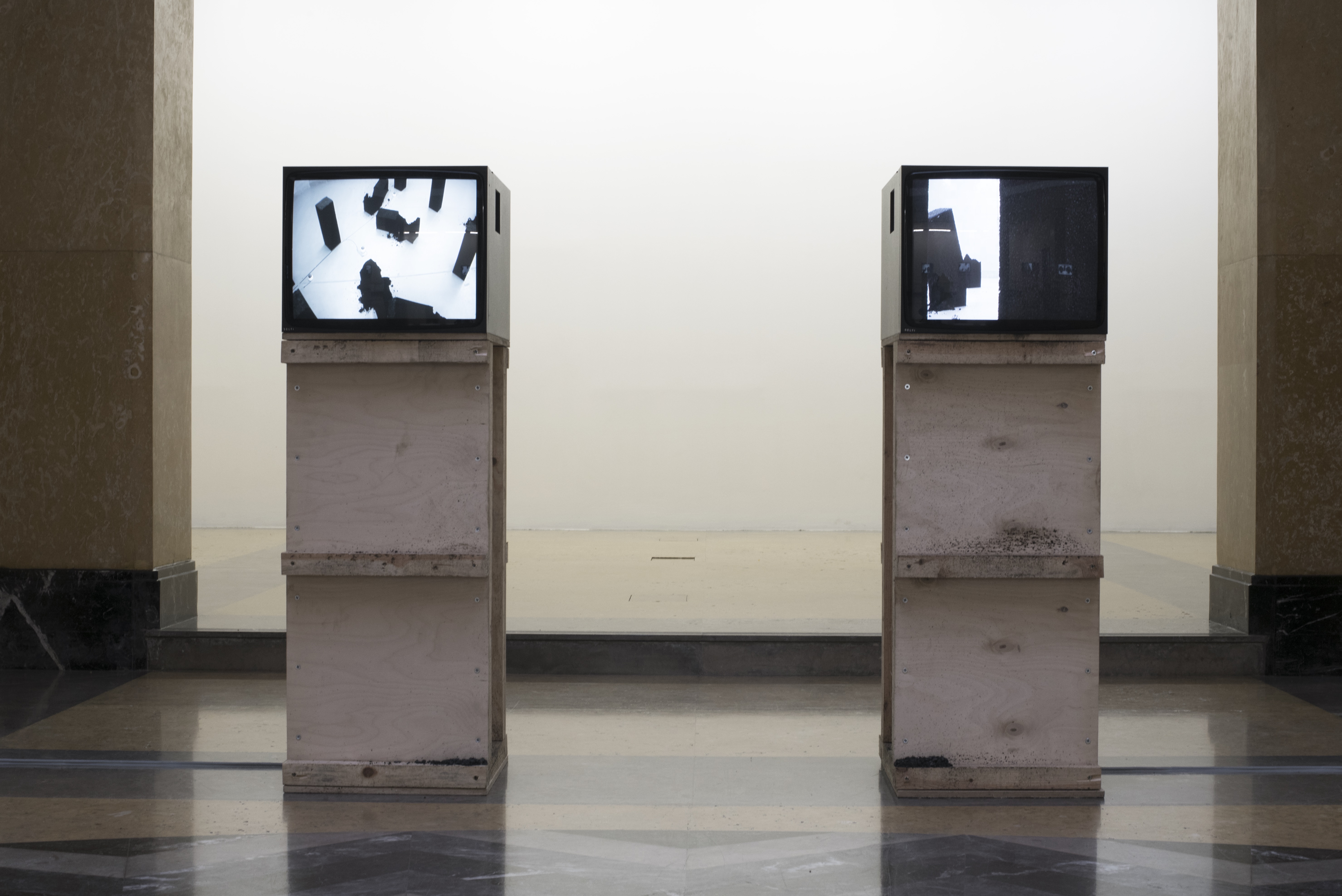
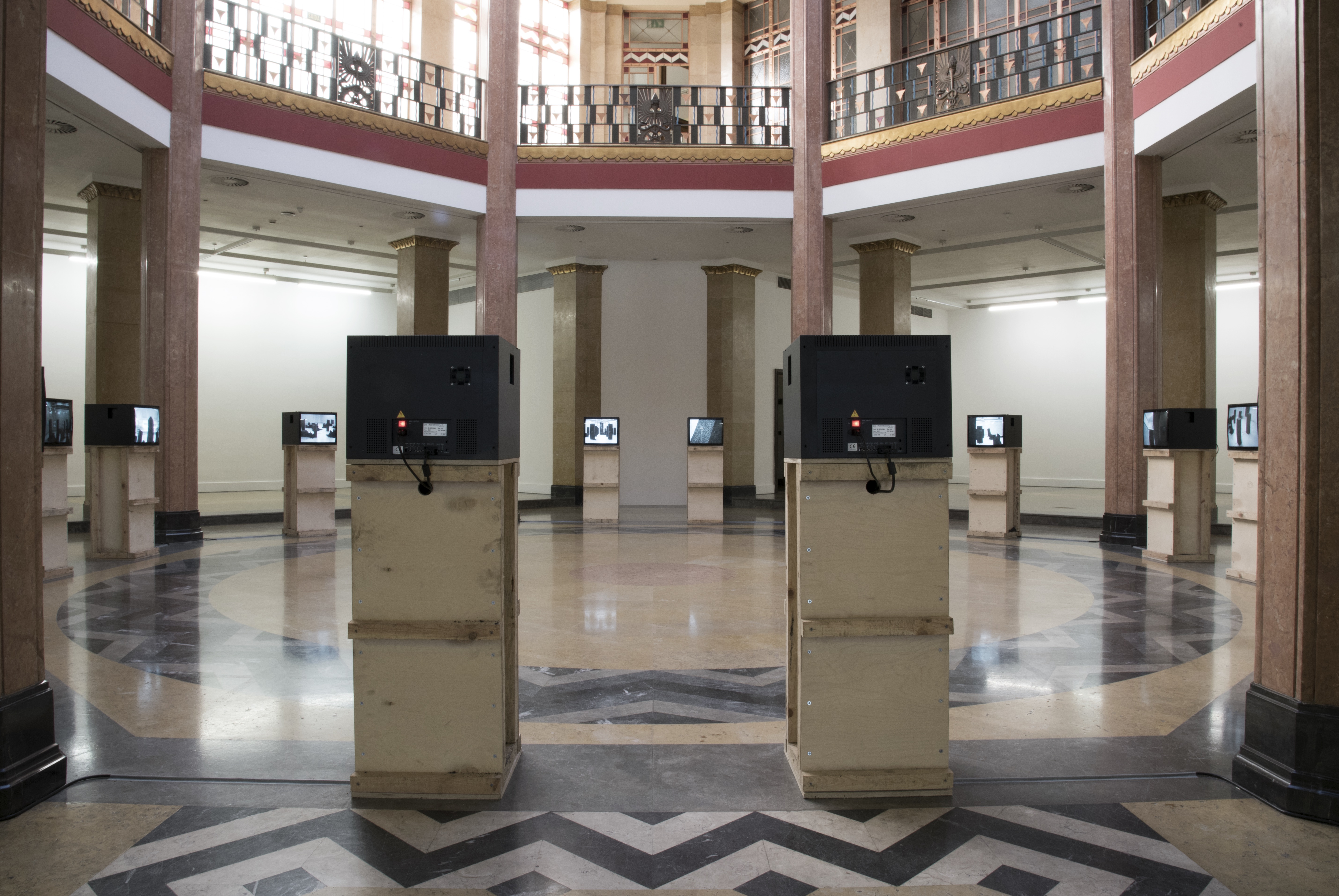
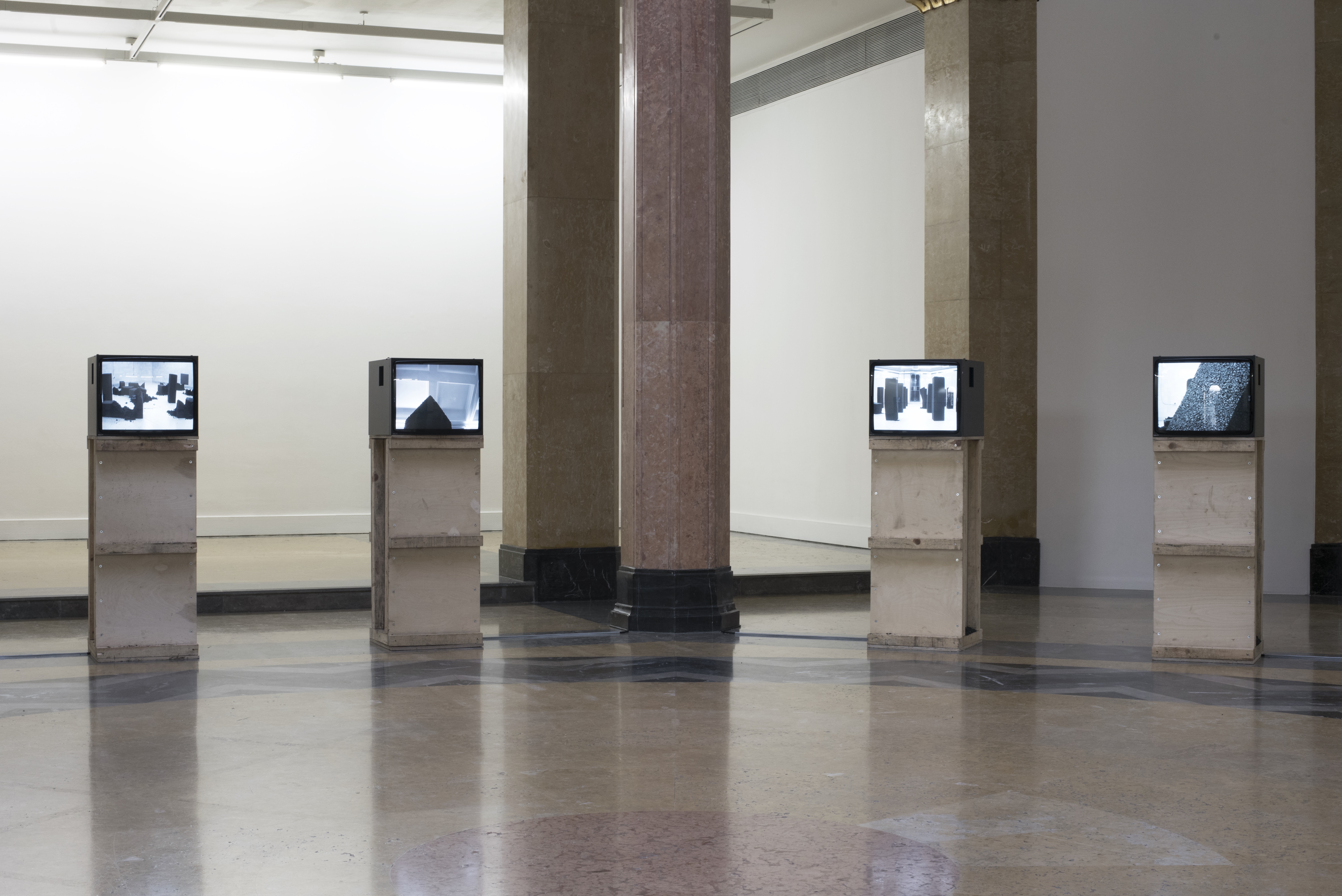

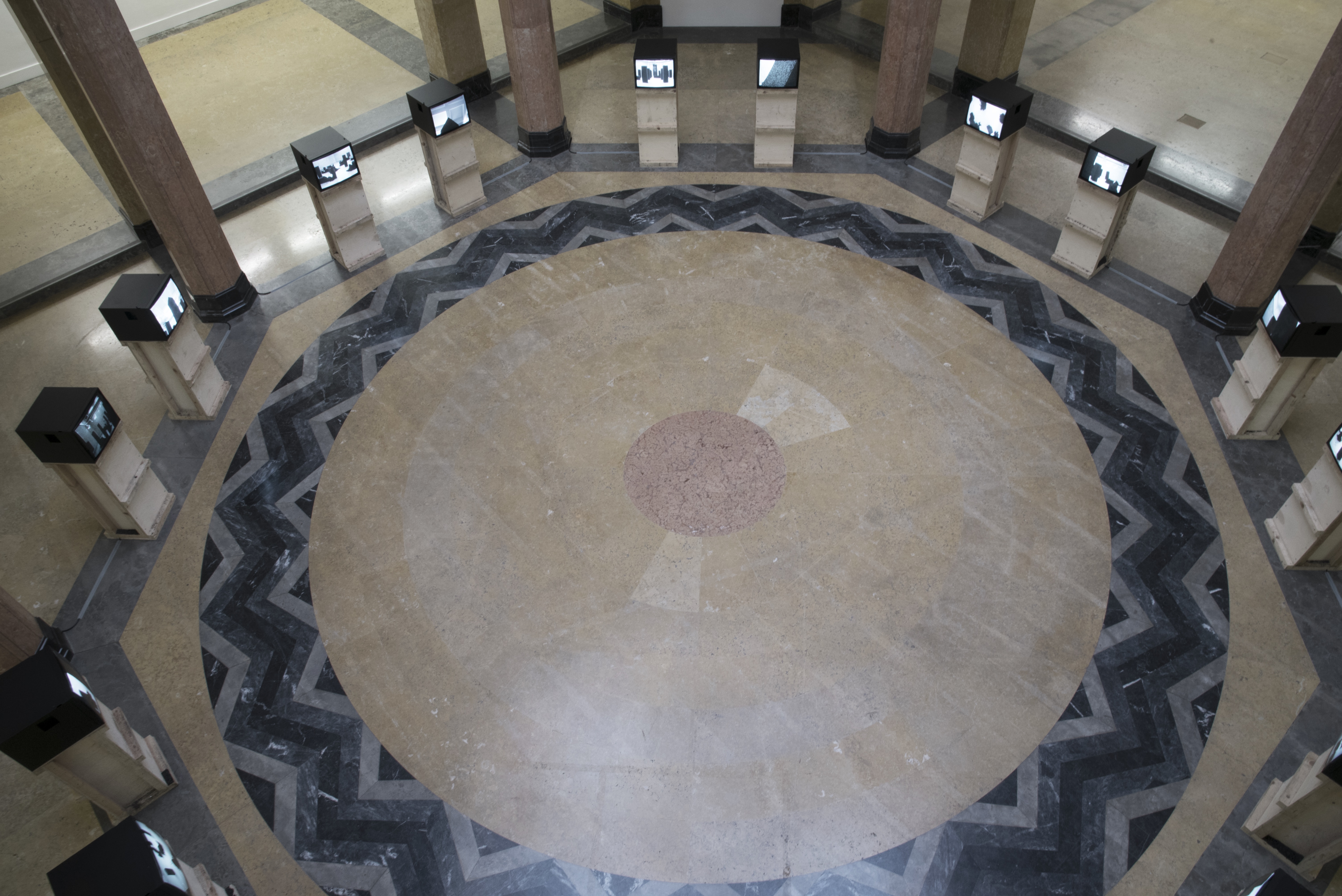

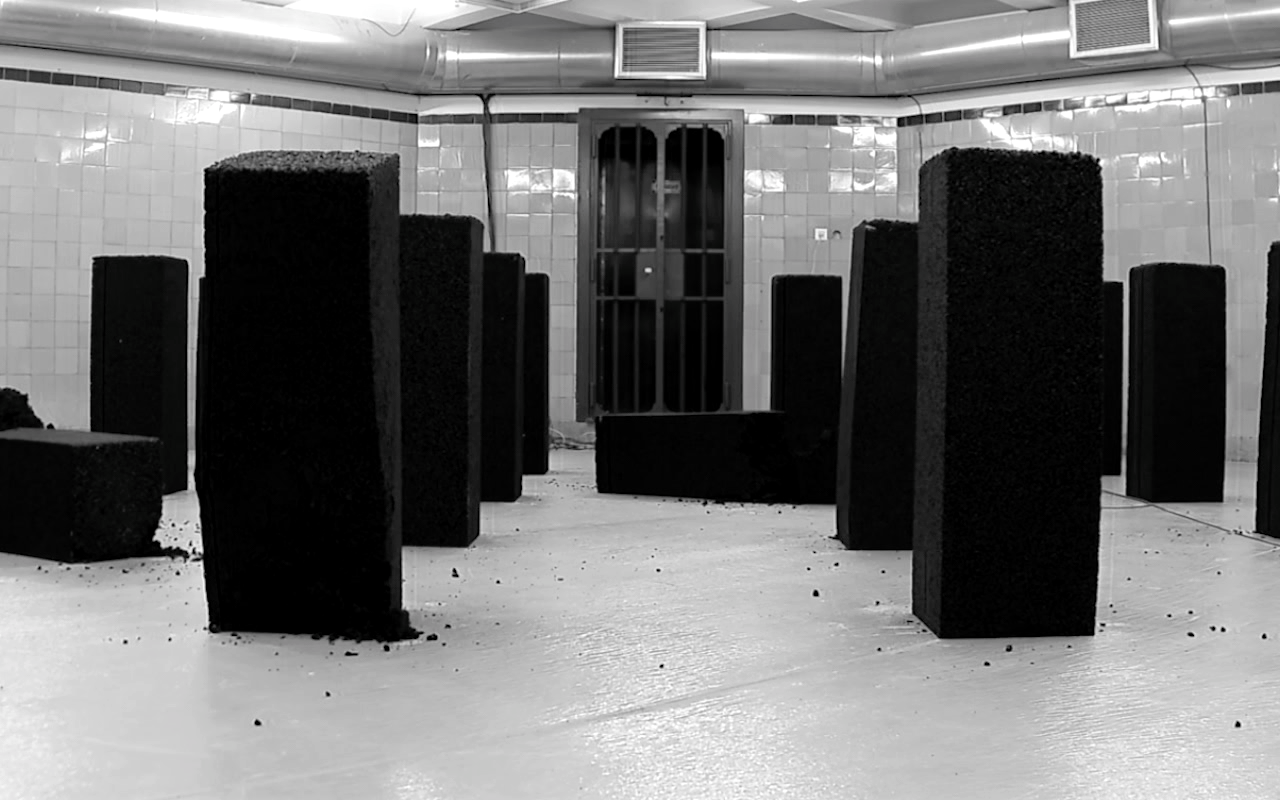


For Culturgest Porto, the artist developed the projectbefore and after before, a complex installation that activates the building’s main vault.
Inside the impregnable room the artist placed sixteen pressed-tar sculptures. These, arranged in a grid as a serial installation of minimalist objects, are nevertheless extremely fragile and destined to irrevocably perish by structural collapse. This process of decay, a decomposition of organic matter, a quasi-metaphor for life, is recorded by surveillance cameras. The recording is then transmitted to the first floor, where fifteen screens show the process unfolding in the building’s basement with a slight time-lag. The sixteenth screen shows a live-feed of the images of what happens (or not) in the vault.
The circle drawn by the screens forms a second sculptural installation, their almost cubic volumes placed on stands made with the boxes that served as formwork for the sculptures.
We are confronted with circular time, the permanent back and forth between past and present, memory and event, recording and expectation. On the other hand, the conceptual quality and the delayed nature of the installation resorts to the rigorous geometry of sculpture in both formulations (grid and circle), the latter inscribed over the former, which physically occupies the same area in the lower floor but is not accessible to the public.
The notions of collapse, inaccessibility, fragility and fleetingness, the presence of surveillance devices and their blocking of actual access to the objects, are, of course, a powerful metaphor for the present which, both in terms of the experience of time and the political resonance, which insinuates itself like an echo.
However, that task already belongs to the viewer: to find meaning in the signs scattered about and left behind like clues.”
Delfim Sardo, 2017
antes e depois de antes, 2017
Asphalt, wood, real-time video circuit, 15-channel video installation, video loop
Dimensions variable
Installation view, ‘antes e depois de antes' Culturgest Porto
Photo — Henrique Pavão
© 2025 Henrique Pavão